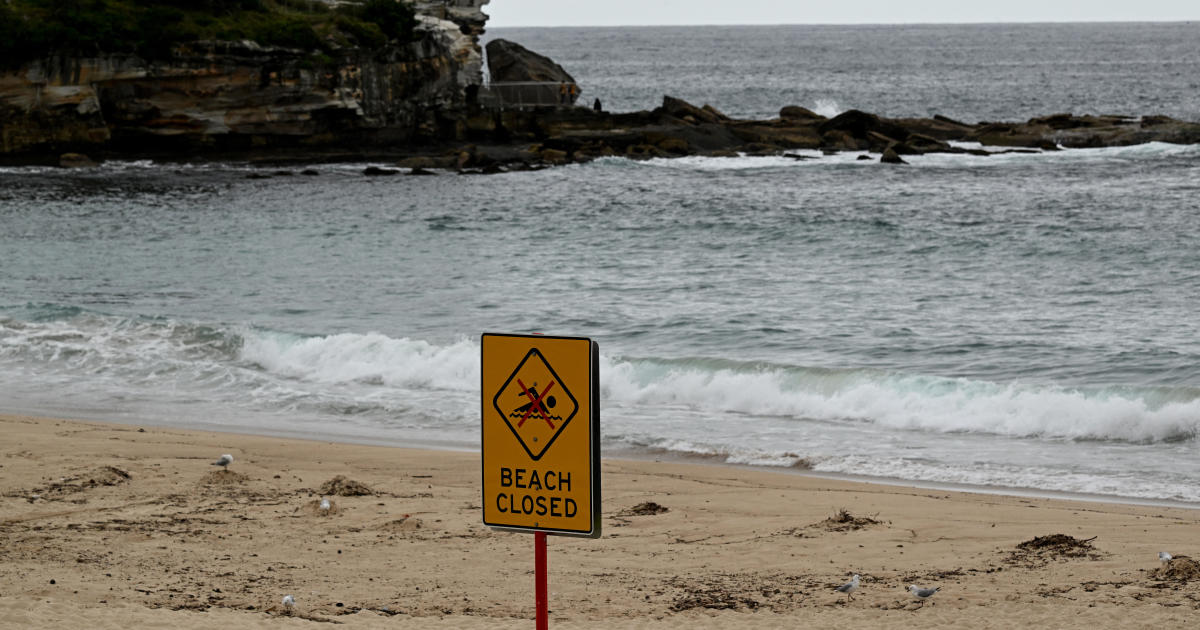The recent appearance of hundreds of mysterious black, tar-like balls on Sydney’s Coogee Beach and Gordon’s Bay has sparked widespread curiosity and concern. These unusual spheres, ranging in size from golf balls to baseballs, have prompted immediate beach closures and a comprehensive investigation by local authorities. The incident has captivated the public, with images circulating widely on social media and numerous speculations about the origin and composition of these strange objects. The beaches, usually bustling with activity, are now eerily quiet, except for the occasional seagull cautiously exploring the dark, slick spheres. This event highlights the unpredictable nature of coastal environments and underscores the importance of prompt investigation and response to such unusual occurrences. The mystery surrounding these tar balls adds another layer of intrigue to this already captivating situation, prompting many to wonder if this is a singular incident, or a possible sign of a wider environmental problem. Furthermore, the concurrent reports of unidentified white blobs on Canadian beaches further emphasize the global nature of such unusual phenomena and the necessity for international cooperation in investigating their cause and potential environmental impact.
Identifying the Mysterious Tar Balls
Initial Assessment and Speculation
Randwick City Mayor Dylan Parker initially suggested that the mysterious spheres might be “tar balls,” a substance formed when oil comes into contact with water and debris. This is a plausible explanation, given the appearance of the balls – dark, tar-like, and spherical. Tar balls are often associated with oil spills or seepage, leading to concerns about potential environmental contamination and its possible impact on marine life. The size and number of these tar balls, however, is noteworthy. The sheer quantity washing ashore points to a significant source, whether a large, localized spill, or the aggregation of smaller, dispersed oil deposits. The investigation’s progress will depend heavily on obtaining samples for laboratory analysis.
Scientific Analysis and Testing
To definitively identify the composition of the mysterious balls, extensive laboratory testing is crucial. Samples will be analyzed to determine the exact chemical makeup, including the presence of hydrocarbons, which would strongly suggest an oil-based origin. Further analysis might involve microscopic examination to identify any particulate matter embedded within the balls, potentially providing clues about their source or origin. This detailed analysis would allow scientists to distinguish between natural occurrences of tar-like substances and those resulting from human activities. Furthermore, comparison to known oil spills in the region would also be helpful in tracking down the possible source of these peculiar balls.
Environmental Impact and Safety Concerns
Potential Ecological Damage
The appearance of numerous tar balls raises concerns about potential harm to the local environment and marine life. Oil contamination, if this is indeed the substance, can have severe consequences. The oil can coat the feathers of seabirds, impeding their ability to regulate body temperature and float. It can smother marine invertebrates, destroying their habitats and disrupting the food chain. Similarly, sea mammals could face respiratory issues or digestive problems if exposed to oil and tarballs. The impact on the already vulnerable beach ecosystem is therefore paramount. This also underlines the necessity for comprehensive cleanup and ecological restoration efforts should the presence of oil be confirmed.
Public Health Risks
While the immediate danger to human health appears low, exposure to crude oil and its components is potentially hazardous. Direct contact can lead to skin irritation and other issues. Ingesting contaminated seafood also presents risks, emphasizing the importance of ongoing monitoring of the water quality and the seafood sourced from nearby waters. Although authorities closed the beaches promptly, the concern over the long-term effects, such as lasting damage to the environment or the food chain, is valid and needs continued attention.
The Investigation and Future Steps
Collaborative Efforts
This unusual incident is prompting a collaborative effort amongst local authorities, environmental agencies, and scientific experts. Understanding the origin and the nature of this substance is paramount for several reasons; ecological restoration, preventing any repeat incidents, and ensuring public health. The investigations necessitate effective cooperation and a shared commitment to uncovering the facts. Information sharing across agencies in a coordinated manner should guarantee accurate and speedy resolution of this perplexing situation.
Ongoing Monitoring and Prevention
Following the initial investigation and analysis, ongoing monitoring of the beaches is essential. This should involve regular beach surveys to detect any further deposits, water quality testing to assess potential contamination, and surveillance of nearby coastal areas to rule out any potential larger pollution event. If oil spills or seepage are deemed the primary cause of the tar balls, establishing clear preventive measures to minimize the risks will be paramount. This is a continuing matter and needs long-term commitment.
Take Away Points:
- The appearance of hundreds of black, tar-like balls on Sydney beaches raises significant environmental and public health concerns.
- Laboratory analysis will be crucial to confirm the composition of the mysterious spheres and determine their origin.
- Potential ecological damage to marine life and the need for extensive cleanup efforts are of great importance.
- Ongoing monitoring, collaborative investigations, and preventative measures are vital in addressing this issue and preventing similar occurrences in the future.




